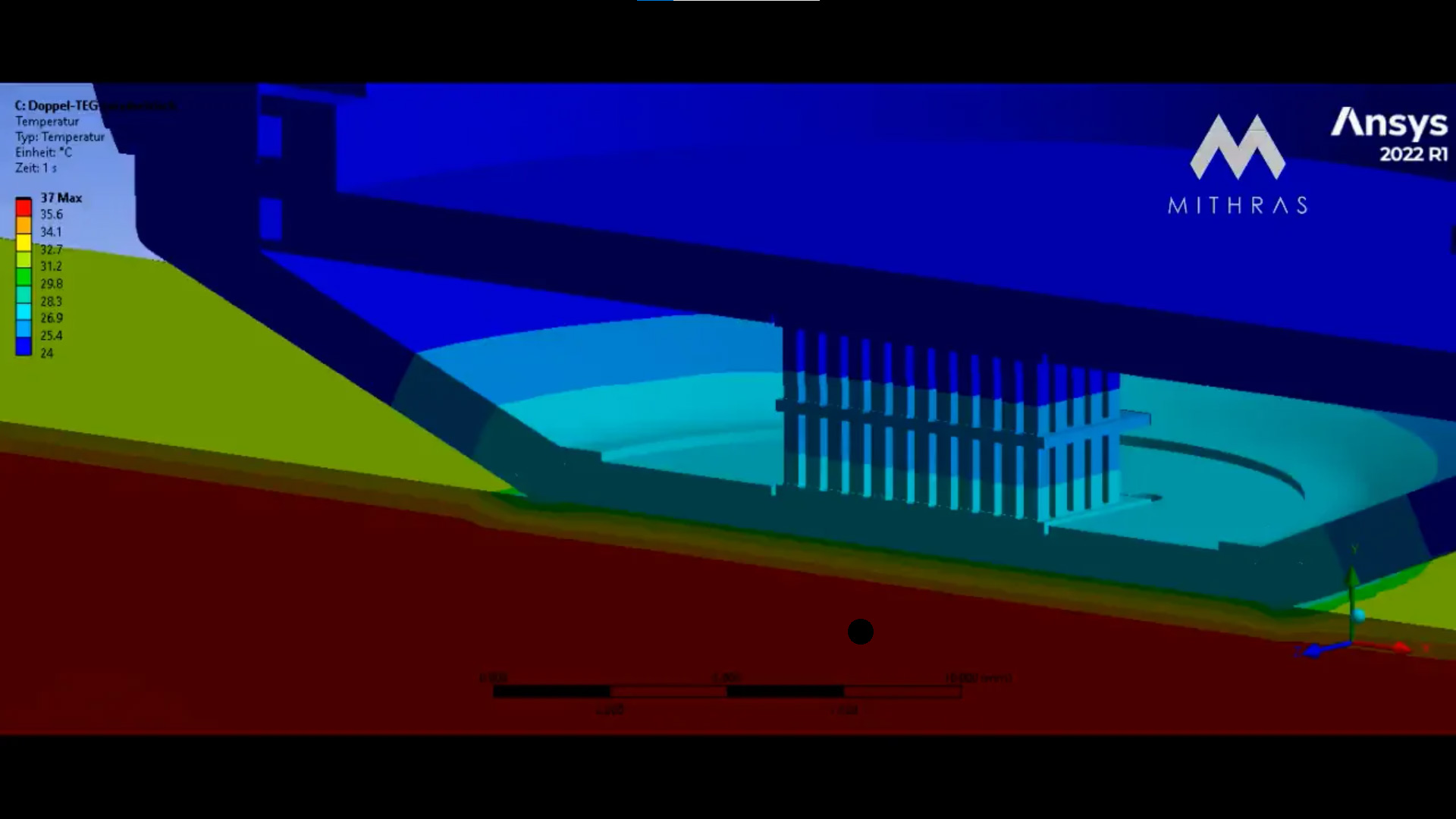Wrist watches powered by electrical energy from body heat
The pulse of the times
Batteries supply wristwatches and other wearables with energy. This energy, however, is actually already available right where you are. This is where the mission of a Swiss start-up begins: Mithras Technology AG develops systems that convert human body heat into electrical energy. Simulations with Ansys provide valuable information for this.
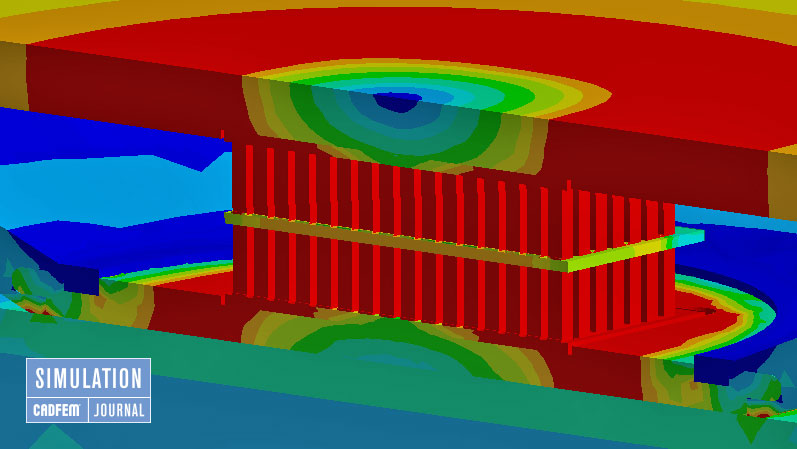
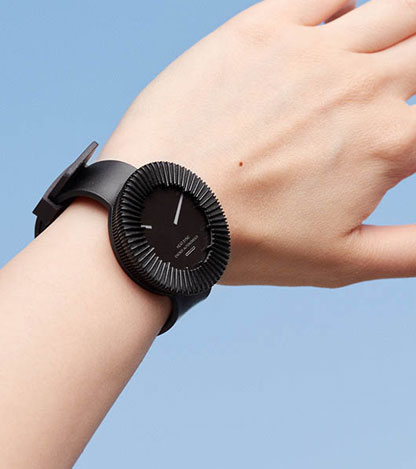
Never need to replace or recharge the battery of a watch again? That's the idea behind the technology developed by Mithras, which converts body heat into electrical energy. Portable and wearable devices with small power inputs can be powered autonomously, and the advantages are more relevant than ever. Batteries are becoming obsolete in this segment, and with them the CO2 footprint they leave behind in their life cycle – from material procurement to production, packaging, transport, and disposal or recycling
How is electrical energy generated from body heat?
Generating electrical energy from body heat is actually inefficient. But whether you like it or not, the human body radiates an average of 100 W of thermal energy every day, and every μW extracted from it is 100% clean energy. So, it pays off!
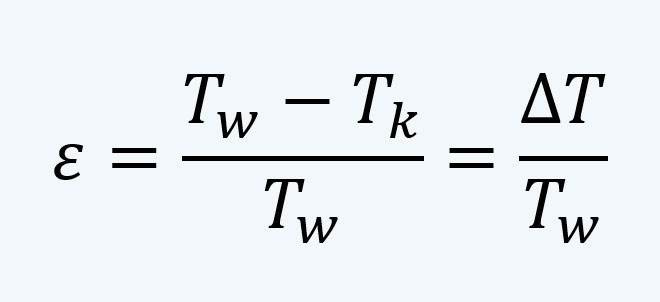
The physical basis for this is the Carnot formula, which describes the maximum efficiency in the generation of energy from heat.
Tw is the absolute temperature on the warm side and Tk is that on the cooler side. Tw is in the range of 305 K at normal skin temperatures. At a ΔT of 1 K, the maximum achievable power is 0.3%. The conversion of thermal energy into electrical energy is done by a thermoelectric generator (TEG). It has a key function, but the TEG reduces the efficiency to 0.1%. If the entire body surface is used, 100 mW would still remain. Of course, only a small part of the body surface can be used. It is therefore a matter of maximizing the ΔT in order to obtain as much energy as possible.
The Watch Project: the perfect time to go without a battery
As the efficiency of the conversion process grows, so too does the technology's potential to become a “game changer” for wearables manufacturers, and the industry has taken note of this. A big player in the watch industry has approached Mithras with specific ideas to determine, among other things, how they can be implemented in a study.
The question to be clarified was based on the example of a typical product from the manufacturer's assortment:
- Is autonomous operation by body heat possible if the energy required to operate the intended watch functionalities is 10 μW?
- Which TEG is recommended considering that the overall thickness of the watch should only increase marginally at most and that the distinctive design of the watch brand should be preserved?
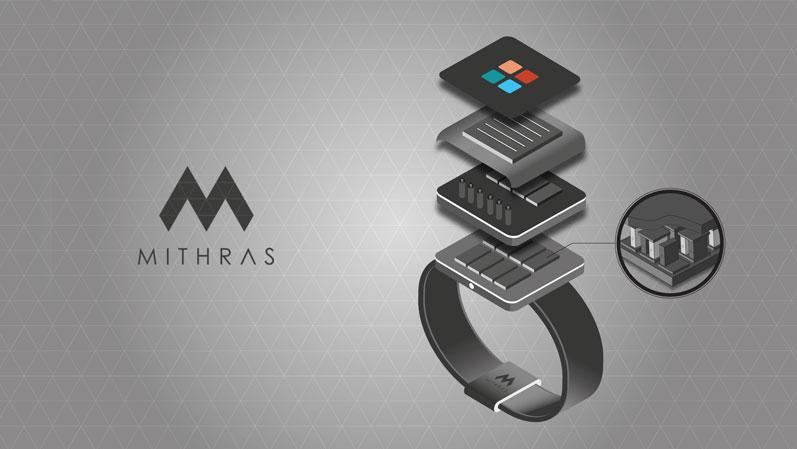
... develops systems for energy generation through body heat. Customers are manufacturers of low-power portable and wearable devices. Mithras is sponsored by CADFEM International and is involved in projects with renowned watch manufacturers.
Simulation based on measured values
The Mithras team used a two-pronged approach to address these questions: first, the conservative route of a physics-based functional model, and second, using this model, they derived a simulation model and a numerical analysis in Ansys Workbench.
The idea behind this strategy is clear. If the values determined largely match, it can be assumed that they are correct. At the same time, the quality of the calculated results is confirmed, which enables Mithras to provide its customers with reliable statements and individualized decision-making tools for the setup of the technology via simulations in an extremely fast, flexible and resource-saving manner for subsequent projects.
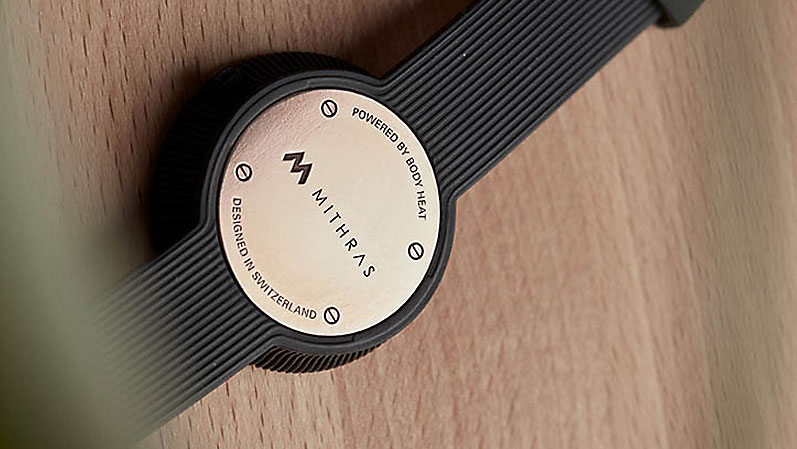
Technology that gets under your skin
In addition to the geometric dimensions of the watch and the installation space for the TEG, knowledge of the thermal behavior of the skin is a crucial factor. Among the many unknowns involved in this calculation, one quantity is reliable – the core body temperature of 37°C. But this can also become complex as the thermal conductivity of skin can vary extremely depending on age, gender, genetics or a person’s physical activity level.
Skin under the engineering microscope
Dr. Moritz Thielen serves as scientific advisor to Mithras. While completing his dissertation at ETH Zurich, he worked intensively on the thermal conductivity of human skin. With his research, he has done important preliminary work for the solution of this central challenge. He measured, evaluated and documented the thermal conductivity of the skin in a large number of test subjects during various activities. Within this extremely heterogeneous population, Thielen calculated the median value across all test subjects for the respective activities.
However, there are other important aspects that also need to be taken into account in the model. For example, most people do not wear their watch tightly on the wrist, as this would cause an unpleasant feeling of pressure. This causes a reduction in the amount of heat transfer between the watch and the skin. Thielen also determined this value for thermal transfer as a function of contact pressure.
Measured values from functional sample as reference
The functional sample for the experimental measurement of the constellation consists of a “sandwich” of an aluminum base plate (collector), a double TEG and an aluminum disk (cooling plate). It is held together by eight polyamide screws. A watch strap is attached to the collector. The cooling plate has been painted with white paint to increase the emission coefficient.
Based on this, the first step was to perform a preliminary study in order to check whether it is possible to create a simulation model in Ansys Workbench that reflects the measured values.
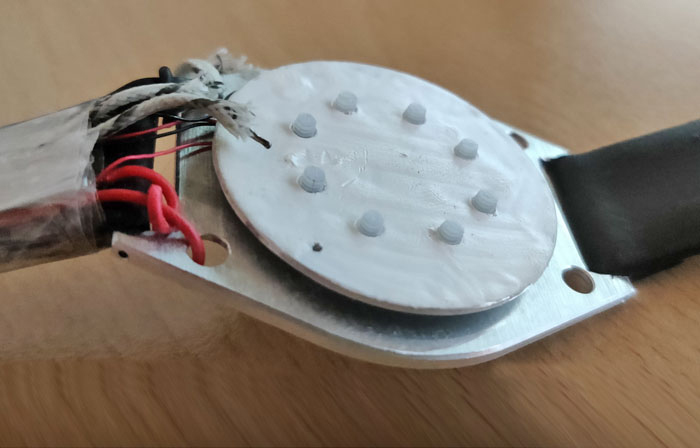
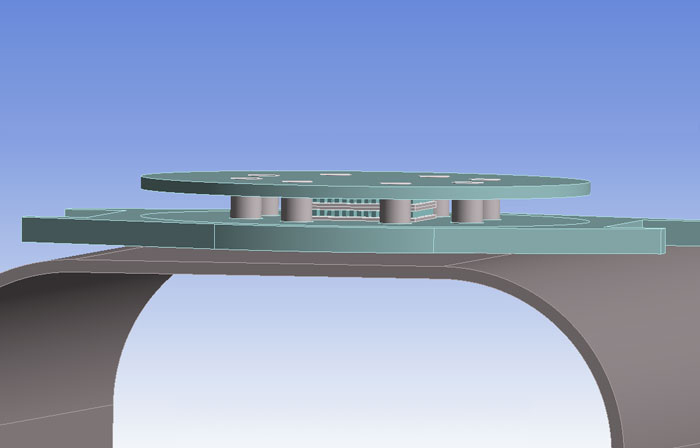
Preliminary studies for simulation
Using the model, a transient thermal analysis was performed to calculate the temperature distribution in Ansys, and the simulation results were compared with those from the measurement. In the simulation model, both further idealized and realistic assumptions had to be made simultaneously. The inside of the skin was defined as a thermal source with a constant temperature of 37°C. Usual values for radiation and convection were defined for the heat release to environment. For the emission coefficients of the surface towards the surroundings or towards the opposite surfaces, the decision was made to use rather small conservative values for metal surfaces.
The skin (as well as the white color) was given an emission coefficient close to 1. For convection, immobile air was assumed. The heat transfer between skin and collector was represented in the model by specially defined contacts. These contacts were assigned a manual thermal conductivity value.
The temperature in the equilibrium state is slightly lower than that of the measurement for the thermal conductivity of the skin, which corresponds to the median from Thielen’s study. Since the subject (the wearer of the functional sample) has a skin with above-average thermal conductivity compared to others in the team, the simulation was repeated with a higher conductivity. The model conditions set in this way were a good real-world representation of thermal equilibrium. The difference at the beginning of the comparison period could be attributed to the application of the functional pattern to the hand, because this does not occur instantaneously in time as it does in the simulation.
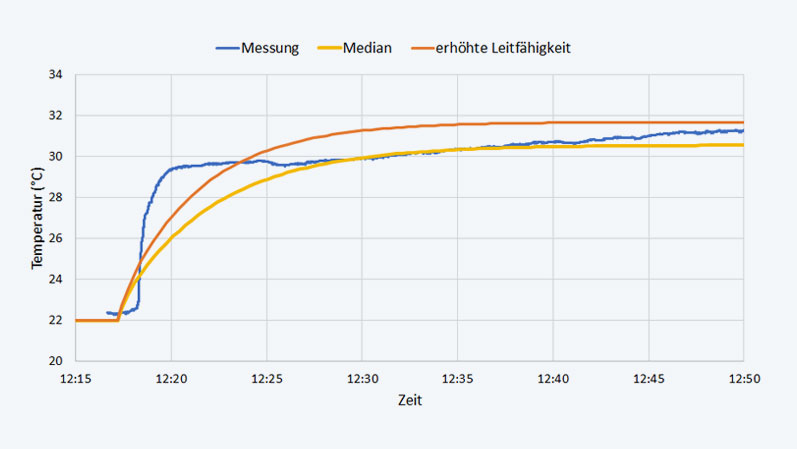
Parametric model of the watch
After this preliminary study, the simulation model of the watch was created, although the material values of the skin and the special contact from the watch to the skin were taken from the model of the functional pattern.
There are a large number of different TEGs that could be used. They differ in the number of thermocouples, their cross sections and lengths. Therefore, the model in Ansys was built parametrically with these three geometric quantities. Since the entire model changed with these parameters, 60 internal assignments (some of them quite complex) were necessary.
The required energy of 10 μW should also be generated when the wearer was inactive. From a thermal point of view, this is comparable to a steady state, which is why a steady state thermal analysis was also sufficient. In addition, it must be considered that putting on the watch cannot be modeled well either, as was already seen with the functional sample. A transient thermal analysis would therefore not provide any relevant additional information.
The sources and heat releases to environment were set analogously to the model of the functional pattern. A high emission value was taken for the glass above the dial, since glass is transparent in the visible spectrum but non-transparent in the mid-infrared range.
The temperature differences across the thermocouples in the TEG were extracted from the temperature distributions and the power was obtained. Of the 25 TEGs, 11 provided the required power. From these, the TEG that had the lowest thickness was determined, thus allowing compact assembly in the watch.
Advantage of simulations over trial-and-error
Using thermal analysis in Ansys, Mithras engineers calculated the temperature distributions for various TEGs within a short period of time. The entire process, from modeling to simulation to evaluation, was accomplished in a fraction of the time it usually takes to design, build, and measure simple functional samples. This demonstrates the great advantage of simulations over the trial-and-error approach.

Mithras Technology AG
www.mithras.tech
Author: Dr. Reinhard Müller-Siebert (Mithras Technology AG)
Images: © Mithras Technology AG
Published: September, 2022
Contact CADFEM




